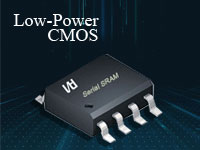2nm does not represent the whole of semiconductors
Although most of the semiconductor market is occupied by mature processes, and most application fields do not require the use of more advanced 2nm processes, companies are still chasing after them, and even recently it has been reported that the two major semiconductor powers in Japan and the United States will jointly develop 2nm chips. .
The 2nm process has been regarded by leading semiconductor manufacturers as the key to occupying the "commanding heights" of the market. However, does it mean that with 2nm technology, you have control over the semiconductor manufacturing industry?
In the process of advancing 3nm, 2nm and even the future 1nm advanced process, the biggest challenge may not lie in technology research and development, but in cost. The chip design cost under the 28nm node is only $51.3 million, while the chip design cost under the 7nm and 5nm nodes jumps to $297.8 million and $542.2 million, respectively.
High cost expenditure is a challenge that major manufacturers have to face, but high investment does not mean that the mass production of chips can be successfully exchanged. Taking the lithography machine as an example, TSMC and Samsung spent a lot of money to purchase ASML's high numerical aperture extreme ultraviolet lithography machine for mass production of 2nm chips, but this does not mean that you can sit back and relax after owning a lithography machine.
The accuracy of the lithography machine directly determines the accuracy of the chip manufacturing process, but in the 2nm process technology, the EUV technology with high numerical aperture, light source, mask tools and other technologies need to be optimized. In addition to the lithography machine, the deterioration of interconnected metal resistance, the demand for high-precision deposition and etching processes, the development of three-dimensional integration of circuits and the development of packaging technology are all technical problems that must be solved in the process of 2nm process research and development.
It can be seen that the advancement of the process is also accompanied by a substantial increase in costs, resulting in a return on investment ratio brought by semiconductor manufacturing companies that may not be as rich as expected. Therefore, it cannot be asserted that the mastery of 2nm technology will lead to the "commanding power" of semiconductor manufacturing. Compared with the performance advantages such as density and power consumption brought by advanced technology, the rising manufacturing cost is more worthy of attention. In the future, advanced technology It is not easy to find a balance between R&D manufacturing and cost expenditure.
Although it is difficult for companies to gain final control in the "last battle" of 2nm, and few companies can finally stand on the commanding heights, this does not mean that the research and development of advanced processes is meaningless.
The breakthrough of each process node of Moore's Law is of extraordinary significance for the development of the integrated circuit industry, and it is bound to change the market structure of the entire semiconductor industry. Therefore, the research on advanced process nodes is of great importance to the development of foundries and the entire semiconductor industry. important. No matter who is the leader in the field of advanced manufacturing in the future, the ultimate beneficiary will be the entire integrated circuit industry and everyone who enjoys high-performance electronic products.
CONTACT US
USA
Vilsion Technology Inc.
36S 18th AVE Suite A,Brington,Colorado 80601,
United States
E-mail:sales@vilsion.com
Europe
Memeler Strasse 30 Haan,D 42781Germany
E-mail:sales@vilsion.com
Middle Eastern
Zarchin 10St.Raanana,43662 Israel
Zarchin 10St.Raanana,43662 Israel
E-mail:peter@vilsion.com
African
65 Oude Kaap, Estates Cnr, Elm & Poplar Streets
Dowerglen,1609 South Africa
E-mail:amy@vilsion.com
Asian
583 Orchard Road, #19-01 Forum,Singapore,
238884 Singapore
238884 Singapore
E-mail:steven@vilsion.com
